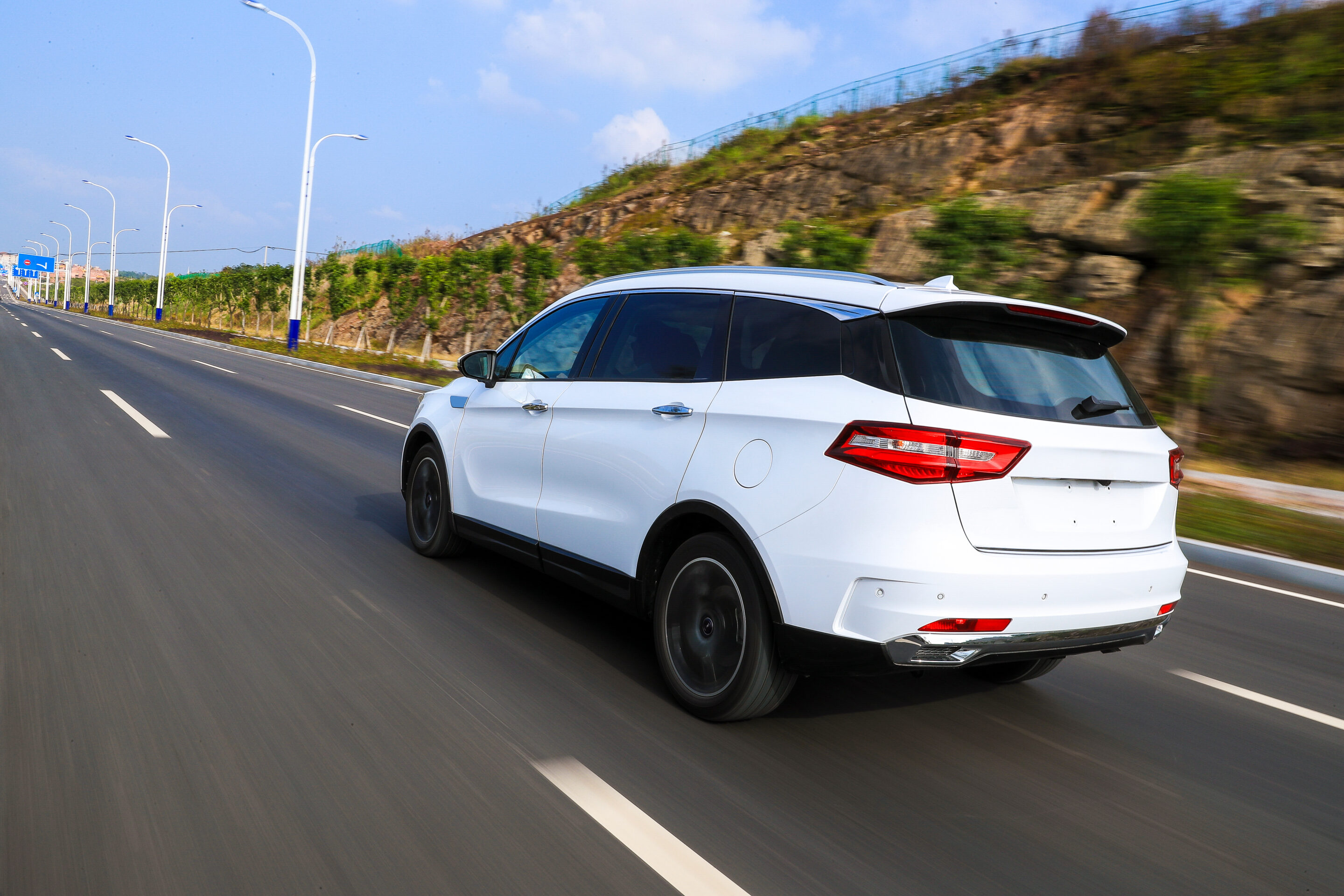 For Tony Group Autoplex, just about everything a dealership needs to operate – from pre-owned inventory to parts – is 2,500 miles away. Everything costs more. There’s no such thing here as a road trip, yet sell vehicles this auto group does and profitably too. Dealer magazine talked to dealer principal Stan Masamitsu to learn how operating a dealership in our nation’s 50th state is different from those operated on the mainland.
For Tony Group Autoplex, just about everything a dealership needs to operate – from pre-owned inventory to parts – is 2,500 miles away. Everything costs more. There’s no such thing here as a road trip, yet sell vehicles this auto group does and profitably too. Dealer magazine talked to dealer principal Stan Masamitsu to learn how operating a dealership in our nation’s 50th state is different from those operated on the mainland.
When asked How is your market unique?, Stan Masamitsu said: “Hawaii has a population of 1.3 million and 900,000 of these people live on the island of Oahu. We are 2,500 miles away from the U.S. mainland. Culturally, we are very ethnically diverse, with people from throughout Asia and from the mainland. Hawaii operates very much like a small town where everybody knows everybody or is in some way connected to you.”
Click here to read the rest of Stan’s story and more from the October 2011 issue of Dealer magazine.
Here is the full story from Stan:
I believe you’re our first Hawaiian dealer cover story, Stan. That’s unique itself. Tell us about Tony Group Autoplex.
My dad, Tony, a second-generation Japanese-American and native Californian, was in Japan, originally with the U.S. Army and later as a civilian, when he met my mom, who is Japanese. He started a Honda dealership there in 1967. He became a Honda dealer here in Oahu, west of Honolulu, in 1977 when I was eight years old.
I am now the dealer, and operate Honda, Nissan, Volkswagen and Hyundai dealerships in one location as Tony Group Autoplex. Last year we retailed a little more than 3,000 new vehicles and 2,000 used vehicles for about $150 million in dealership sales.
How is your market unique?
Hawaii has a population of 1.3 million and 900,000 of these people live on the island of Oahu. We are 2,500 miles away from the U.S. mainland. Culturally, we are very ethnically diverse, with people from throughout Asia and from the mainland. Hawaii operates very much like a small town where everybody knows everybody or is in some way connected to you.
Therefore, reputation within the community is very important. Everybody talks about that, of course, but here it is especially true. At one time, we operated dealerships in California where customers are transient. That is not the case here, for the most part. We have to rely continuously on essentially the same customer base for future business.
Three Honda and three Nissan dealerships, including us, operate on Oahu. There also is one other VW and Hyundai dealership on Oahu as well. There are Honda, Nissan, and Hyundai dealerships on each of the other main islands (Maui, Kauai, and Hawaii), but not a lot of cross-island shopping occurs between them.
So, you might say that our borders are clearly defined. Customers here simply don’t – can’t – drive far to shop other dealerships. This is good from a captive customer perspective, but that fact also limits opportunities to dealer trades to meet customer needs.
Which suggests inventory management is critical.
It absolutely is. Take new models, for instance. Manufacturers start promoting the arrival of new models for September, but we usually won’t get them until the following month. Our Japanese imports arrive here directly from Japan, but Hyundai and VW ship here from the mainland. This lag requires us to carry a larger inventory, most times, than is common for most other dealerships. Not only don’t vehicles arrive here as often, but also as I mentioned, opportunities for dealer trades are very narrow. These factors contribute to longer order-to-delivery times and more challenging inventory forecasting.
The result must be a deeper days’ supply.
Yes. While the mainland is 45 to 60 days, we’re 60 to 75 and occasionally 90 days. Sometimes we get a little thin, too, as it takes longer to replenish. Days’ supply with used units can be even more challenging. Often we must supplement local stock with vehicles acquired on the mainland. It then costs us $1,000 per unit to have those units shipped here and, if we’re lucky, the vehicles will arrive in three weeks. Rental cars are easy to buy here but I can use only so many Mustang convertibles or Cobalts.
These dynamics mean we have to be especially careful when we buy on the mainland. We have to offset that transportation charge to be competitive. Not only are these units loaded with this delivery expense but also by the time they arrive they’re 20 to 25 days older, which upsets our days’ supply and cost models.
Because of the shipping issues and the fact that we only have one major auction here, we’ll keep our vehicles in inventory for 90 days. We also use pricing tools like vAuto to make sure that our pricing is competitive within the marketplace, although having enough critical mass to determine a “market price” is sometimes difficult for us here since there are no markets between 250 and 2500 miles away!
I’m sure readers are wondering how the 2010 tsunami in Japan affected your business.
As an island, we were very vulnerable. Having two Japanese car brands made us very nervous about what might happen here, immediately and in the aftermath of the tsunami. Fortunately, the high days’ supply of new inventory actually turned out to help us for the first few months after the disaster disrupted the car manufacturer’s supply chain in Japan.
The other major effect of the tsunami, at least in the short-term, was its impact on tourism here, our biggest industry. Half of all our visitors are from Asia, with about half of them from Japan. The numbers have been recovering but there was a huge dip in the first few months after the earthquake.
We’re lucky to be living in “paradise,” so to speak, but there are some perils of being isolated.
Is staffing an issue?
Not really, Honolulu is a medium-sized city, but if we don’t home-grow talent, especially at a higher management level, it can be hard to attract the right talent here. Sounds odd, doesn’t it; I mean, who wouldn’t want to live in Hawaii, right?
On the other hand, it’s one thing to come here to visit, but to work here, it is a big deal, because even from the closest point on the West Coast we’re 2500 miles away. People who move here from the mainland can end up feeling isolated. We have a term here for what often troubles mainlanders who’ve moved here – we call it “rock fever;” they get antsy living on an island. When it’s only about 30 miles from one end of the island to another there’s no such thing here as a road trip to get away.
How does that translate to the type of vehicles you sell?
We sell our share of trucks – the best-selling vehicle in Hawaii is a Toyota Tacoma, so we sell a lot of Nissan’s comparable small truck, the Frontier. However, the cars we sell tend to be the smaller vehicles like Honda Civics versus Accords and Nissan Versas versus Altimas. Domestics here own less than 18 percent of the market, and the balance is imports, mainly Asian. In fact, just three Japanese brands – Toyota/Scion, Honda, and Nissan – comprised more than 50% of the retail new vehicle registrations in Hawaii last year.
Stan, given your market, what do you feel are your biggest challenges?
Based on where we stand within our 20 group, I would have to say that our challenges are quite similar to those of other dealers’. I’ve touched on one challenge, which all dealers on in Hawaii face — the need for very careful inventory management. Parts inventory management is also critical and a special challenge. There’s always a lag in getting in special order parts and “overnight” delivery from the mainland is still two days! People here understand this and don’t often complain about it but it is an additional challenge and cost of the auto dealership business here.
Another challenge for dealers here is our difficult real estate situation. A lot of the commercial real estate in Hawaii is owned by the Kamehamha Schools Trust, which has roots back to the Hawaiian monarchy. This trust doesn’t seem to view dealerships as the ideal tenant – not the greatest return on investment. Many dealerships in Honolulu are or had been leasing property from this trust but today those leases’ rents are becoming too expensive for dealers to operate on or the terms are too short to amortize the significant facility upgrades that the manufacturers are asking for.
Fortunately, for us, we’re located further out on west Oahu, where we’ve been able to put together 11 acres that we were able to purchase for our four dealerships, plus six additional acres for offsite storage.
Given your limited geography, how important is the Internet to your success?
It is still an important part of our business. Despite our small-town feeling, Oahu still has 900,000 people, who also use the Internet to shop and buy vehicles, same as the mainland. We have an Internet sales coordinator and salespeople in each store who are designated Internet sales people. We are getting about 28% of all retail vehicle sales originating from the Internet, and our web site, which is from Dealer.com. We track leads through our CRM, which, like our DMS, is from ADP.
Like everyone else, we’re doing our best to keep up with the changes in technology and how our customers use it to interact with our business. Paid leads, SEO, SEM/PPC, chat, social media, online reputation…it can easily get confusing and overwhelming. While we’re constantly reviewing and evaluating the “latest and greatest” stuff our vendors come up with, our primary goal has been to keep things as simple as possible by focusing on things like making sure we reply promptly to all the inquiries and following up on them in a thoughtful manner. No matter how high tech our business becomes, I believe the personal relationships we establish with our customers will always matter, especially in an island community like ours.








